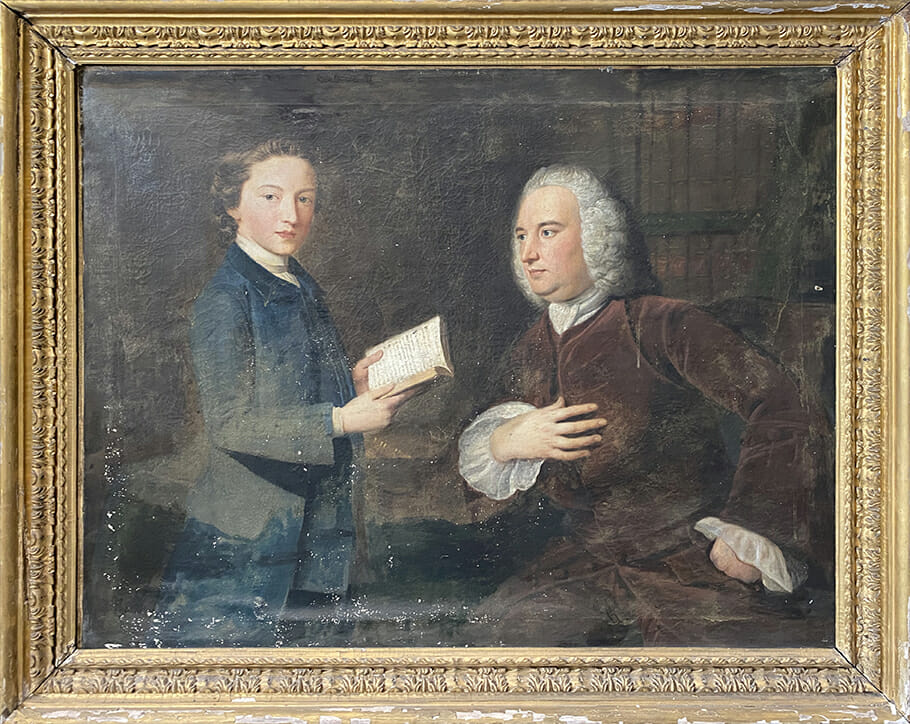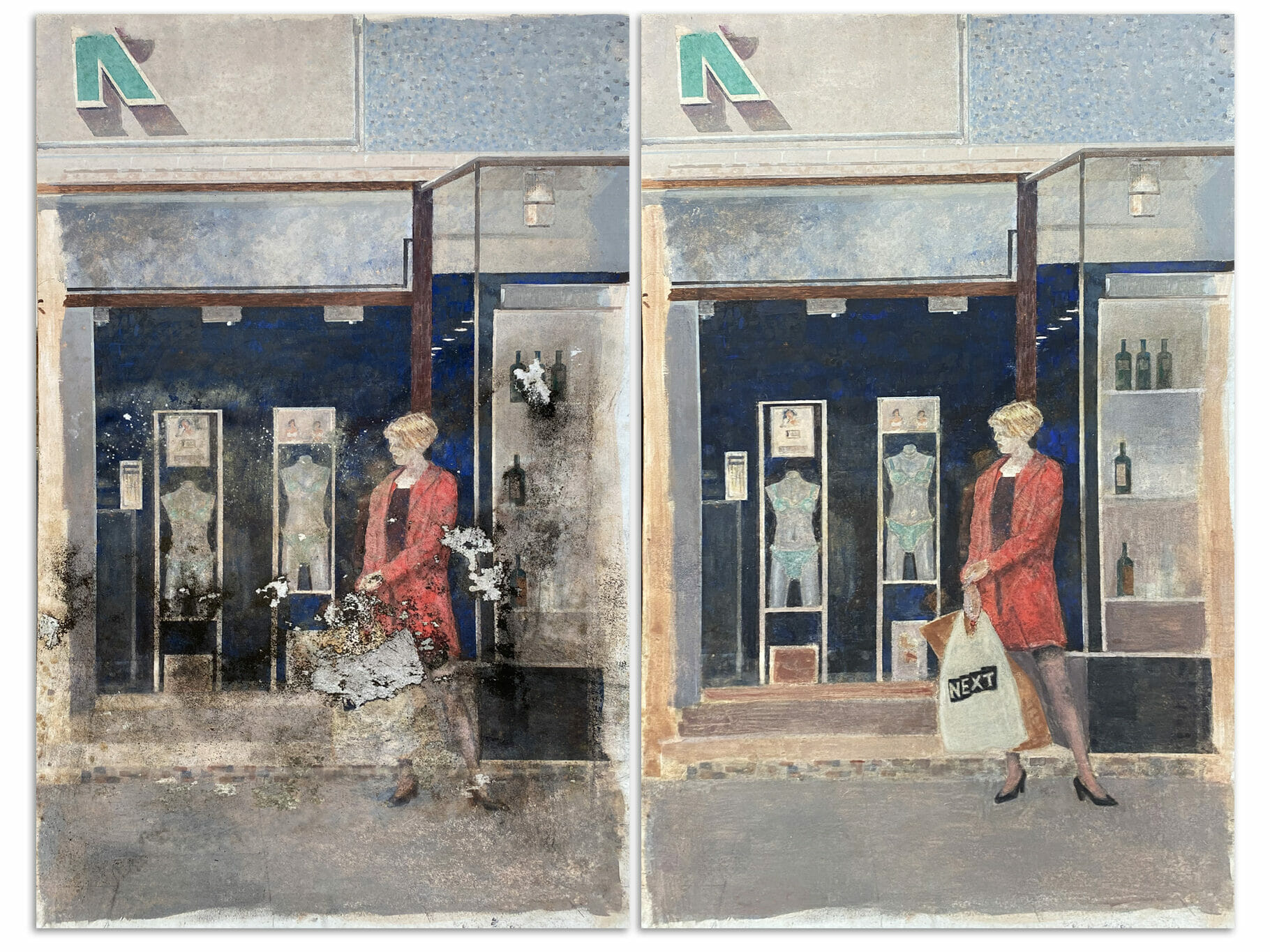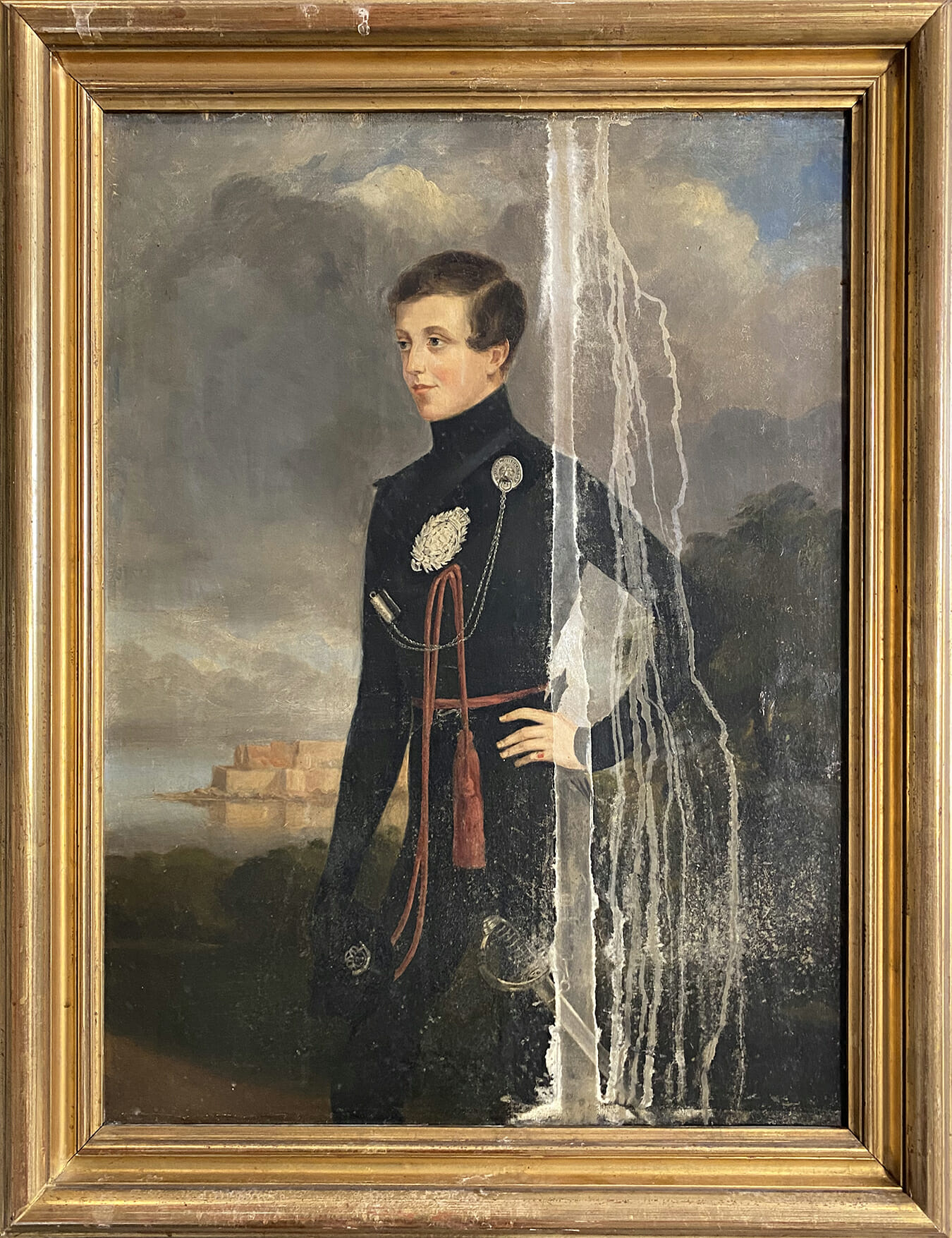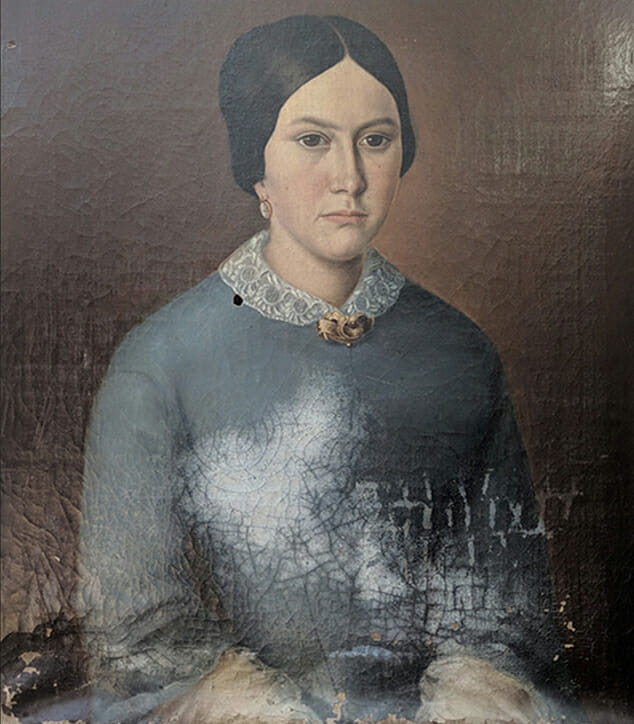Mould can arise on artworks in numerous ways, whether they are oil paintings, acrylic paintings, watercolours or other works on paper. It is more common during the autumn and winter months due to the greater fluctuations in temperature and humidity.
Additionally, it can be triggered when there is a reduction in airflow from closed doors and windows, whether this is due to the cooler temperatures or steps that are taken to dry a property with water ingress.

The onset of mould or mildew with artworks can appear minor at first but will fast escalate if not treated at the earliest opportunity.
If a room has suffered an escape of water, it can easily and quickly affect the artworks on display or in storage. Whether they have had direct exposure to water, are being kept in the affected room while the problem persists, or while the room is being treated for such water ingress, all artworks need to be checked over.

Where do you find mould growth on paintings?
Mould spores are in the atmosphere invisibly, but they have the potential to gather and spread upon surfaces in conditions which suit them. When it comes to paintings, this is most often on the back of the canvas. This space can often be up against a cold wall, where the gap behind the painting can form a pocket for the warm interior air to clash. As well as this area being a dark space, on antique paintings the canvas itself can be an absorbent material, inviting the mould spores to sink into the fabric. The infiltration into the canvas by mould spores can cause serious damage to the paint layer, disrupting it and potentially causing loss of pigments from the canvas.

Which conditions cause mould growth on a painting?
The prevalence of mould is most common when a darkened room has humidity above 55% and the temperature is around 20˚C. To avoid conditions for mildew and mould to form, a humidity level of 45% with a temperature of 18-20˚C is ideal. Sunlight is a key consideration in preventing mould growth, and so a soft amount of natural lighting should be considered when hanging or storing artwork.

Damp and mould are also prevalent on paintings which have been affected by water damage, whether that be from severe flooding or a small leak. Although the oil painting might not originally seem to be severely damaged by the event, the moist canvas will almost certainly attract mould contamination and slowly destroy the artwork.

We have experienced a number of mould damaged artwork claims where artworks have been left on display in rooms that have suffered water ingress, resulting in changes to the environmental conditions that the artworks are accustomed to. Additionally, claims involving artworks affected by water exposure have been exacerbated by having the artworks, not yet dried out, being wrapped in plastic. This rapidly escalates the speed and severity of which mould will occur.
How to minimise mould damage occurring to a painting
By the time a person might notice damage to the painting’s surface and investigate the cause, it is likely to have already spread significantly behind the canvas. To avoid further damage and a higher claim related to mould damage, there must be a fast response and preventative measures taken.

There is a temptation to brush the mould off thinking this will resolve the problem or significantly reduce the issue. However, all this will achieve is the spread of mould spores to a greater area of the artwork. If there is any suspicion that mould or mildew may be affecting artworks, it is key to have them assessed promptly. This can via desktop review from photographs or having them collected for assessment.

A thorough assessment will be able to determine any risks from mould spores in hidden areas, treating the issue in its early stages, if required. This will minimise any risk of increase of damage as well as the escalation of claim costs. If mould contamination is found during an assessment, the treatment requires trained conservators to act quickly and diligently with their expert techniques. This includes the use of a specialist ozone machine to kill spores before they develop further and cause widespread damage.

After this has been completed and the painting is guaranteed mould-free, the oil painting should be appropriately framed. It should also be confirmed that the location the artwork is returning back to has the appropriate environmental conditions implemented. If this is a room or property that has suffered an escape of water, it is essential that it has been fully dried prior to the artworks returning for display.

As long as all of these steps are taken, the painting’s longevity should be preserved. If you or your clients have artworks and are concerned they may have been exposed to water or damp conditions, we would be happy to assess them and provide advice to help minimise the risk of mould onset.






